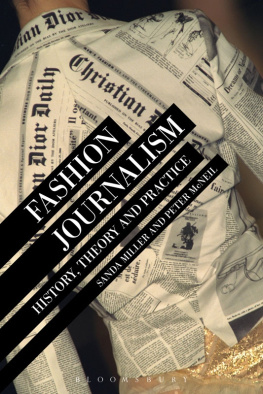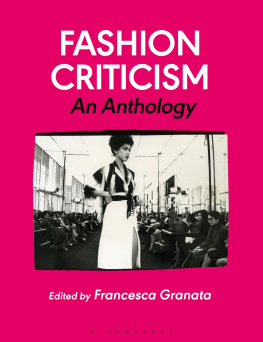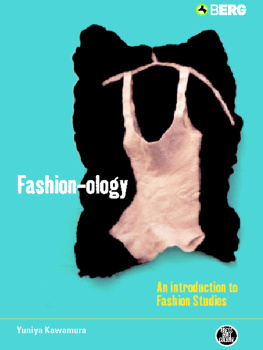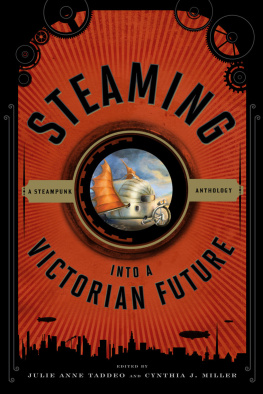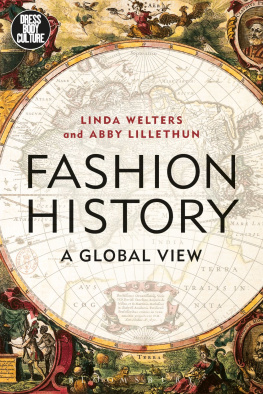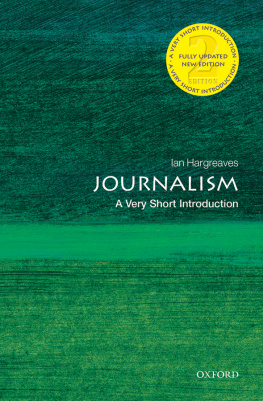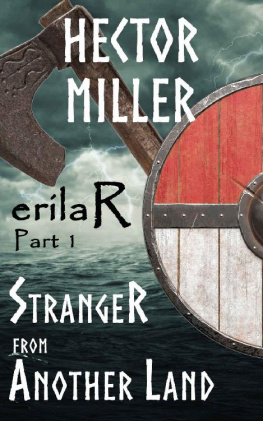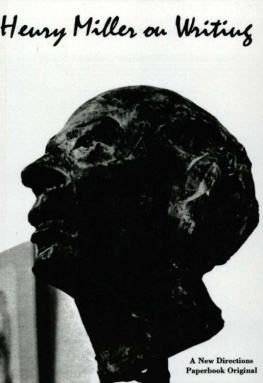Sanda Miller - Fashion Journalism
Here you can read online Sanda Miller - Fashion Journalism full text of the book (entire story) in english for free. Download pdf and epub, get meaning, cover and reviews about this ebook. year: 2018, publisher: Bloomsbury, genre: Art. Description of the work, (preface) as well as reviews are available. Best literature library LitArk.com created for fans of good reading and offers a wide selection of genres:
Romance novel
Science fiction
Adventure
Detective
Science
History
Home and family
Prose
Art
Politics
Computer
Non-fiction
Religion
Business
Children
Humor
Choose a favorite category and find really read worthwhile books. Enjoy immersion in the world of imagination, feel the emotions of the characters or learn something new for yourself, make an fascinating discovery.
- Book:Fashion Journalism
- Author:
- Publisher:Bloomsbury
- Genre:
- Year:2018
- Rating:3 / 5
- Favourites:Add to favourites
- Your mark:
- 60
- 1
- 2
- 3
- 4
- 5
Fashion Journalism: summary, description and annotation
We offer to read an annotation, description, summary or preface (depends on what the author of the book "Fashion Journalism" wrote himself). If you haven't found the necessary information about the book — write in the comments, we will try to find it.
Fashion Journalism — read online for free the complete book (whole text) full work
Below is the text of the book, divided by pages. System saving the place of the last page read, allows you to conveniently read the book "Fashion Journalism" online for free, without having to search again every time where you left off. Put a bookmark, and you can go to the page where you finished reading at any time.
Font size:
Interval:
Bookmark:
Fashion Journalism
Fashion Journalism
History, Theory,
and Practice
Sanda Miller and Peter McNeil
Bloomsbury Academic
An imprint of Bloomsbury Publishing Plc

In Fashion Journalism: History, Theory, and Practice, writing and ideas come together. It is the companion to Fashion Writing and Criticism, a historical and theoretical work on fashion criticism published by its authors in 2014. Fashion Journalism: History, Theory, and Practice takes advantage of both academics roles as writers who at times have also worked for the popular press, particularly Millers forty-year career in the print media as well as broadcasting. Miller has taught university students this topic for many years, and now shares her distinctive approach to writing for and about fashion.
It is almost a clich from undergraduate to Ph.D. candidates that many people are anxious about writing. Our aims and objectives are firstly to provide a didactic manual that encourages fashion, art, design, and other such students to write without fear. More importantly, a new dimension is addedwe work together with students in order to learn how to find inspiration for both writing and styling beyond the world of Google, useful as Google might be; indeed, everyone now uses it for reference and information. Full of exciting examples from the great traditions of humanistic art, literature, music, philosophy, and also the beauty of the everyday, Fashion Journalism: History, Theory, and Practice empowers students to access the visual richness that is required of the fashion designer as much as the fashion writer.
There is a growing awareness around the world that there is a general crisis concerning ignorance of the culture of fashion, even among those who work in the production (Weller, 2007: 39). If fashion is a form of knowledge, then the profession requires you to develop many types of knowledge, including the visual. Finding visual inspiration outside your immediate field is also therefore a concern of this book.
The work aims to teach you how to look for yourself rather than word-searching, simply sitting at home and browsing the web or reproducing the millions of (sometimes banal) photo-stock images that are all around us. How do you bring an expanded sense of the world around you into your fashion orbit? How do you rise to the top and leave the ordinary behind? Is there a way to go beyond the few words relevant on instagram?
We address the student directly on these points. Everything a student of fashion journalism needs is contained in this book. Fashion Journalism: History, Theory, and Practice explains the established categories in journalism. Students learn that writing is not a collection of ideas laid down on paper but necessarily carries a structure. The six famous questionswhat, who, why, where, when, how?the latter being the key point in journalismare applied to fashion writing, in order to demystify writing and to demonstrate that writing can be learned. Through a series of case studies and examples drawn from everything from art to current affairs, students learn the structure and logic required to create a piece of succinct writing. Whether fashion writing is the same as news reporting in cognate areas is a key topic tackled throughout this book.
and Antoine, for discussing the state of fashion education today.
The authors wish to thank the anonymous reviewers at Bloomsbury and our editors Ariadne Godwin and Frances Arnold, as well as Pari Thomson, for their patience.
Sanda would like to thank the two most important people in her journalistic career, both of whom gave her support and enabled her to become a journalist (albeit on a freelance basis).
The first presence was the maverick and magnificent literary editor of The Times, the late Philip Howard (19332014), whom Wikipedia introduced as the distinguished journalist who worked for over 50 years for The Times... (educated at Eton and graduated with a First Class Degree in Classics at Trinity College, Oxford). Philip gave Sanda the chance to review a book for him. The year was 1984 and she continued to review for him on a regular basis until he decided to give up his literary editors role in 1993.
The second presence was the distinguished BBC 3 radio producer Piers Plowright (gently referred to as a radio legend), with whom she collaborated between 1984 and 1998 (when Piers Plowright retired) researching and compiling documentaries ranging from art and philosophy to cookery.
She would also like to thank her colleagues and friends at Southampton Solent University, where she is Research Fellow (after working there for seventeen years as Senior Lecturer), and her wonderful colleagues at the fashion college Istituto Marangoni, London. It was for the Marangoni students that she returned to journalism in order to create a unit to teach students how to write for the press. This unit was the starting point for Peter and Sandas book. Finally, Sanda would like to thank her familyNoa, Giulia, and Neilfor being family!
Peter would particularly like to thank the participants in Fashioning the Early Modern, an EU-funded project led by Evelyn Welch which ran from 2010 to 2013, especially John Styles, who generously shared his wide knowledge regarding the history of print and eighteenth-century newspapers. The discovery of certain images in this book and their related photography was made possible while Peter was a Fellow at the Lewis Walpole Library, Yale University. He is also grateful to Aalto University for appointing him Distinguished Professor within the FiDiPro Costume Methodologies project (2014-2018) funded by the Academy of Finland, allowing him to work more closely with European colleagues, including his coauthor. He wishes to thank Professor Sofia Pantouvaki and the many other collegiate researchers within the Costume Methodologies/ Academy of Finland major funded project as well as the Aalto University Costume in Focus (CiF) research group. Friends and colleagues who assisted with details of the manuscript and picture research include Kristen McDonald of the Lewis Walpole Library and Virginia Wright, Launceston. He also thanks Bathurst Regional Art Gallery for a residency at the bucolic Murrays Cottage in Hill End, New South Wales, at which he was able to consider final stages of this manuscript. The Centre for Contemporary Design Practices in the Faculty of Design, Architecture and Building at UTS also supported the project. Finally, he thanks his graduate students past and present, particularly Masafumi Monden, and wishes Anthony OBrien returned health.
This book is dedicated to the friendship of Sanda and Peter, who were brought together by historical and contemporary research about fashion.
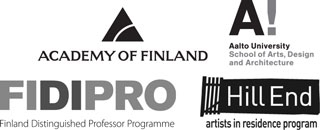
With support by the Costume Methodologies research project of Aalto University within the Finland Distinguished Professor (FiDiPro) scheme
Unlike the notion of fashion criticism, which still raises some eyebrows regarding its ontological status (does it even exist?and in some sense it clearly does, as we are discussing it here, even if not in the sense in which the reader of our book might have anticipated)fashion journalism is all around us. We read and hear reports about fashion both past and present in the press, on the television, at the movies, and online on our computers and handheld devicesfrom iPads to mobile phones. Can we therefore talk about fashion journalism as an independent category of journalism? The answer is yes, and it is much easier too than in the case of fashion criticism, because within the modern practice of journalism we are inundated with a multitude of newly created categories of journalism, and even if some are oxymora, many appear to be functioning well. Moreover, a growing number of contributions on the subject address this very issue, such as Julie Bradfords recent book
Next pageFont size:
Interval:
Bookmark:
Similar books «Fashion Journalism»
Look at similar books to Fashion Journalism. We have selected literature similar in name and meaning in the hope of providing readers with more options to find new, interesting, not yet read works.
Discussion, reviews of the book Fashion Journalism and just readers' own opinions. Leave your comments, write what you think about the work, its meaning or the main characters. Specify what exactly you liked and what you didn't like, and why you think so.

